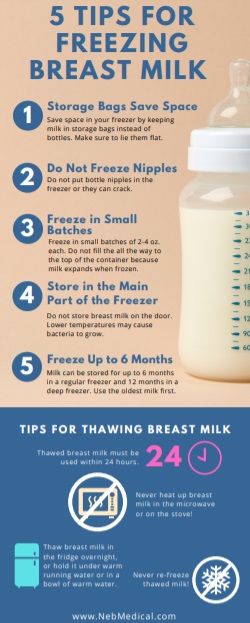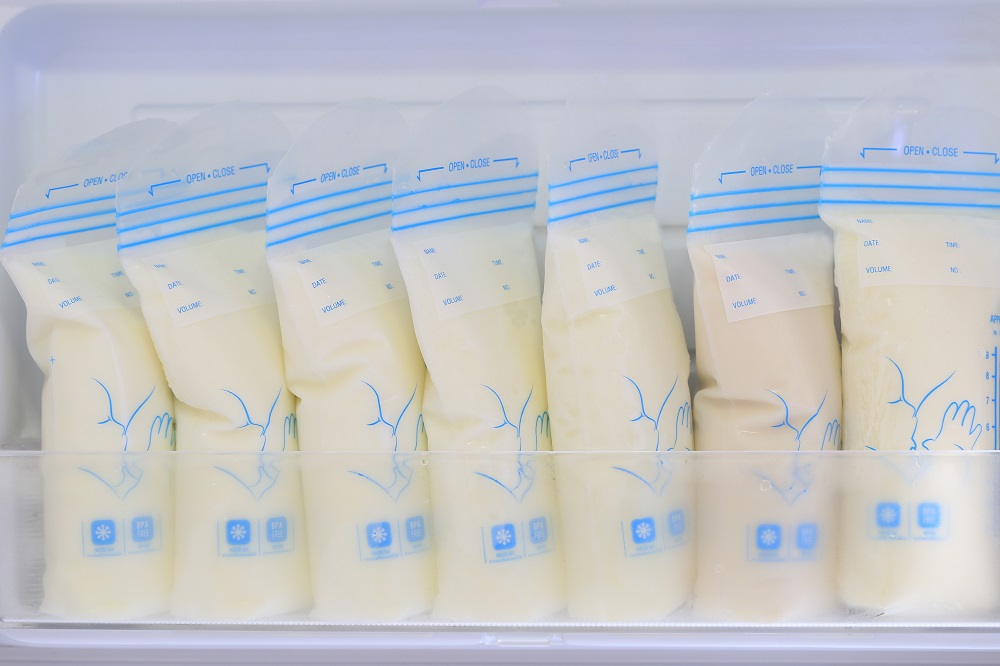Are you about to go back to work and starting to wonder how you’ll provide enough breast milk to feed your baby while you’re away during the day? If so, you may want to start thinking about how to freeze breast milk.
How Much Breast Milk Do I Need to Freeze?
First of all, despite the images that you may see on social media of freezers packed with containers breast milk, it is by no means necessary to create a freezer stash of breast milk. For thousands of years, women have simply fed their babies when they were hungry and never needed to worry about pumping or storing milk. And it’s also perfectly fine to simply pump as much milk as your baby will need and keep it in the fridge for the next feeding.
However, there are some advantages to freezing breast milk. If you’re planning on sending your baby to a babysitter or daycare, it’s a good idea to have a back-up supply of about three days’ worth of milk that your baby will need when she is away from you. That way, if anything gets spilled, lost, accidentally thrown out, etc., you’ll be covered. (Here are some tips on how to calculate how much you’ll need to pump for one day of work).
Also, having some extra breast milk in the freezer can come in handy if you want to have an occasional date night or time away from your baby. Just remember, you don’t need to overdo it! If you have so much breast milk in your freezer that there isn’t enough room for your ice cream and frozen pizza, you probably have too much.
Tips for Storing Breast Milk in the Freezer
- Choose the container you will use
If you’re planning on freezing your breast milk, you’ll first have to consider what type of container you want to use. Pumping the milk directly into a bottle (without a nipple) and then putting that bottle in the freezer is certainly the quickest way of doing it. But all of those bottles can take up a lot of room in the freezer. (Bottle nipples should not be put in the freezer because they can crack).If you want to save space, you can try transferring your milk into breast milk storage bags, and then lay them flat in the freezer. (You can try these from Medela or others.) You can store them in a plastic container, alternating the way the bags face in the container, to pack the most bags into a small space.However, be aware that the edges of the bags can become sharp when they freeze, which may cause a tear in the bag. So when you thaw them out, it’s a good idea to put them in a cup to catch any leaking milk from the bags. - Label your container
No matter which method you choose, make sure the container is clearly labeled with the date it was pumped, how much is in each bag and your baby’s name if you are going to be sending it along with him to daycare. Make sure the milk goes into the freezer within 24 hours of when you first pumped it. - Freeze in small batches
Breast milk expands when it freezes, so do not fill the milk all the way to the top of the storage container. In fact, it’s best to freeze it in small batches of two to four ounces each to avoid waste, because once you thaw frozen breast milk, you can’t freeze it again. - Store it in the main part of the freezer
Always store your breast milk in the regular part of the freezer, not the door. Milk stored in the door will be exposed to a wide range of temperatures, and when the milk is not as cold, bacteria can start to grow in the milk. - Keep the freezer cold
The CDC recommends that breast milk be frozen at a temperature of 0°F, which is the temperature most freezers are set at. You may want to consider buying a remote freezer thermometer, which will beep if the temperature in the freezer gets too high. - Use the oldest milk first
When it’s time to use your frozen breast milk, start by using the oldest breast milk first. Breast milk can be stored in a regular freezer that’s part of a side-by-side or top-and-bottom refrigerator for up to six months, and it can be stored in a deep freezer for 12 months.
Tips for Thawing Frozen Breast Milk
There are several safe ways to thaw breast milk. You can:
- Transfer the bottle or storage bag into the refrigerator and let it thaw overnight. If you are using a storage bag (place the bag in a cup in case there is a tear in the bag)
- Hold the bottle or bag under warm running water
- Place the bottle or bag in a bowl or warm water
Never heat breast milk in the microwave or in a pot of boiling water on the stove! This can scald your baby.
Once breast milk is thawed, it can be stored in the refrigerator, but it must be used within 24 hours. Once frozen breast milk is thawed, you should not freeze it again.
Tips for Freezing and Thawing Breast Milk (infographic)
Click below to see larger image



